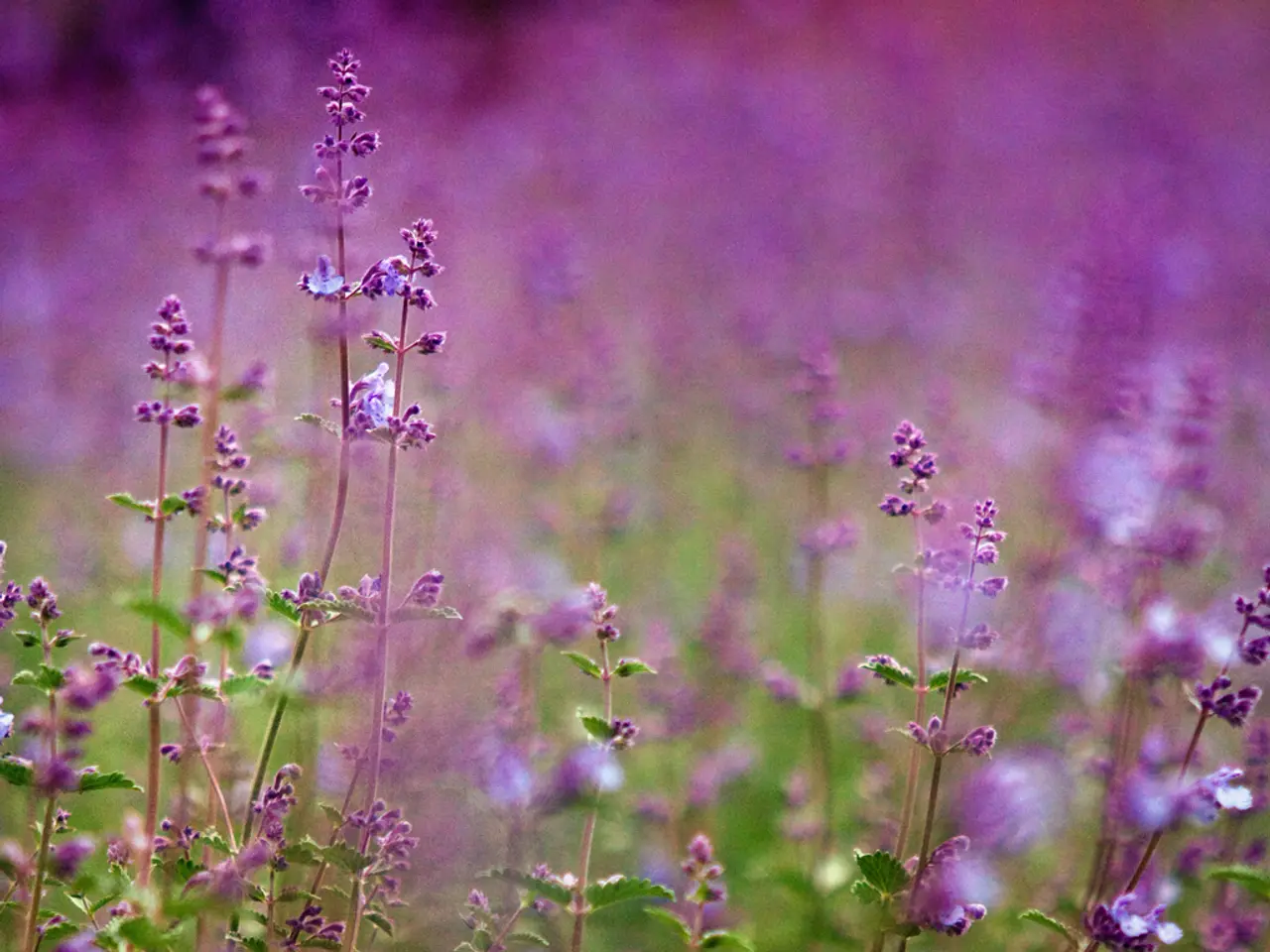Cultivating 5 Varieties of Lavender for Stunning Aroma and Attractive Blossoms
Growing and Choosing the Perfect Lavender Variety for Your Garden
Lavender, with its fragrant purple blooms and versatile uses, is a popular choice for many gardeners. Commonly cultivated varieties are divided into several categories depending upon their species. These varieties differ in climate hardiness, growth habits, flower characteristics, and ideal garden uses.
English Lavender (Lavandula angustifolia)
Known as "true" lavender, English lavender thrives in cooler climates (USDA zones 5-8) and prefers well-drained soil with full sun. It produces fragrant purple flower spikes and is known for its hardiness. Popular varieties include 'Hidcote' and 'Munstead', which are compact and suitable for hedges, borders, containers, and herb gardens. They are drought-tolerant once established and good for beginners.
French Lavender (Lavandula dentata)
French lavender is better suited to warmer, moderate winter climates. It has toothed leaf edges and blooms mid-to-late summer. It does well in pots, containers, and raised beds and is fairly drought-tolerant. It is less hardy than English lavender but good for cottage gardens and decorative uses.
Spanish Lavender (Lavandula stoechas)
Native to warmer, drought-prone areas, Spanish lavender is heat- and humidity-tolerant and has a distinctive pine-like scent. It is disease-resistant and suitable for hot climates, valued for container gardening and landscaping. It blooms with unique "rabbit-ear" shaped bracts atop flower spikes.
Portuguese Lavender (Lavandula latifolia, spike lavender)
Known for broader leaves and a stronger camphor-like scent, Portuguese lavender thrives in hot, dry conditions and attracts bees and beneficial insects. It is evergreen and used in xeriscaping, essential oils, and companion planting.
Lavandin (Lavandula x intermedia)
A hybrid between English and Portuguese lavender, Lavandin combines the cold tolerance of English lavender with the heat and drought tolerance of Portuguese lavender. Lavandin plants tend to be larger and faster-growing, with highly fragrant flowers and excellent hardiness, making them ideal for northern climates and diverse garden uses.
In summary, English and Lavandin lavenders are best for cooler climates and general garden uses, including hedging and containers. French lavender suits warmer areas and decorative gardening in pots. Spanish lavender excels in hot, dry, and humid regions with distinctive flowers, while Portuguese lavender is ideal for very hot, dry garden conditions and attracts beneficial insects. Choosing the best variety depends on climate, soil conditions, garden size, and specific uses such as fragrance, flower form, or wildlife attraction.
For those interested, 'Munstead' lavender heirloom seeds can be found in the author's platform Shop.
| Variety | Climate Suitability | Soil & Water | Growth & Maintenance | Best Uses | |------------------|------------------------|-----------------------|----------------------------------------|--------------------------------------| | English | Cooler climates; zones 5-8 | Well-drained, dry once established | Compact, prune after bloom; drought tolerant | Borders, hedges, containers, herb gardens, floral crafts | | French | Warmer areas with mild winters | Well-drained, moderate drought tolerance | Ideal for pots/containers; less cold hardy | Cottage gardens, pots, raised beds | | Spanish | Hot, dry, and humid climates | Heat & humidity tolerant, drought resistant | Disease-resistant, pine-scented | Landscape use, containers, xeriscaping | | Portuguese | Hot, dry, drought-prone areas | Very drought tolerant, well-drained | Evergreen, broad leaves, attracts pollinators | Xeriscaping, companion planting, essential oils | | Lavandin (hybrid) | Wide range; cold hardy and heat tolerant | Drought tolerant, faster growing | Large size, very fragrant | General garden use, essential oils, cut flowers |
- The popular 'Hidcote' and 'Munstead' varieties of English lavender, known for their compact size and hardness, are suitable for gardens in cooler climates (USDA zones 5-8), making them an excellent choice for borders, hedges, containers, and herb gardens.
- For those in hot, dry, and drought-prone areas, Portuguese lavender, with its strong camphor-like scent and attractiveness to beneficial insects, is ideal for gardening as it is evergreen and can be used in xeriscaping, essential oils, and companion planting.




